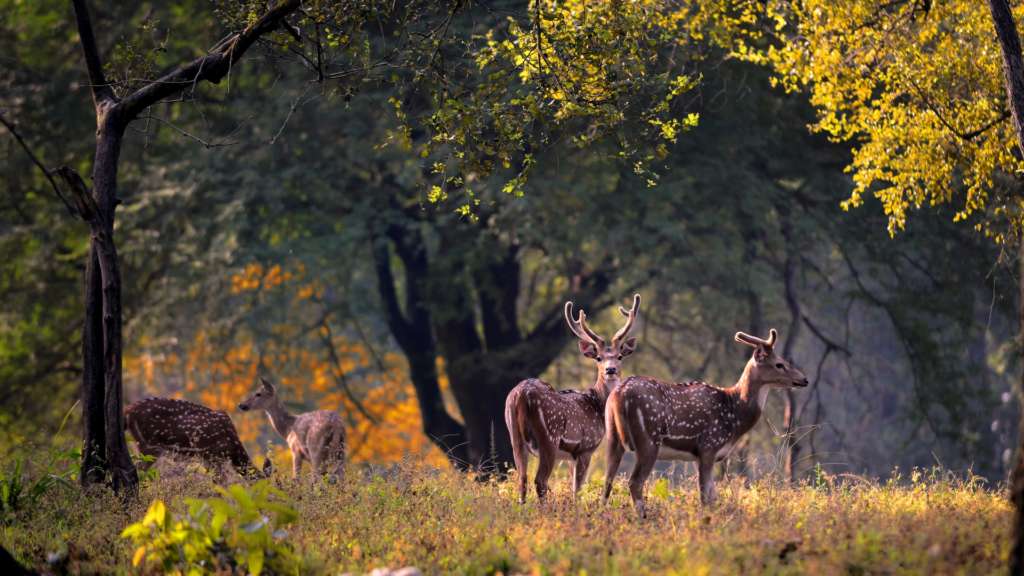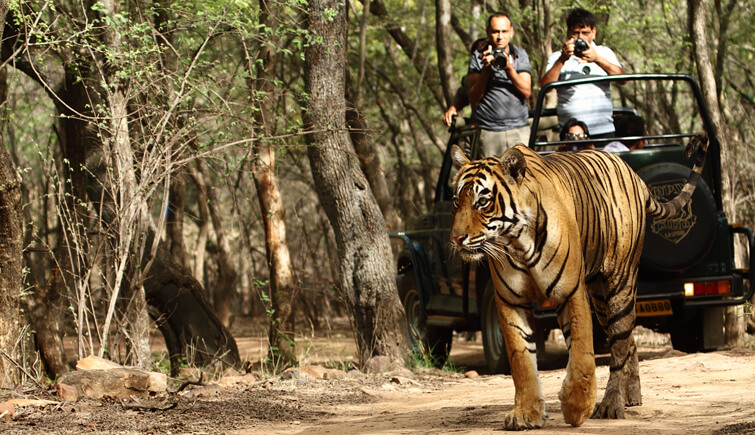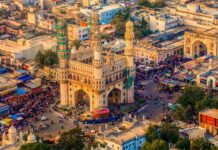Situated in the Indian state of Madhya Pradesh, the picturesque Kanha National Park was the inspiration behind Rudyard Kipling’s unforgettable classic Jungle Book. The romance of the Kanha National Park has not diminished over time – it is still as beautiful.
If one were to point to the middle of India, chances are he will pick out the forests of the Banjar and the Halon valley, the two forming the western and eastern halves of the Kanha Tiger Reserve, which have long been famous for their wide diversity of wildlife.
The park was created in 1955 by a special law and, since then, it has dedicated itself in preserving a variety of animal species. Many endangered species have indeed been saved here. Today Kanha is among the few most scenic and beautiful wildlife reserves in Asia. This ‘Tiger Country’ is the ideal home for both predator and prey.
By far the most striking features of this region are the open grassy meadows, where sighting blackbuck, swamp deer, sambhar and chital is common. And, if one can transcend into time, a barefooted Mowgli would perhaps come padding along the dusty trail, for this is the land of Kipling’s Jungle Book.
Best time to visit: The climate of this region is tropical. Summers are hot and humid with a maximum and minimum temperature of 40.6°C and 23.9°C. Winters are pleasant with an average maximum and minimum temperature of 23.9°C and 11.1°C, respectively. The annual average rainfall is 152 cm. The park is closed from July to mid-November during monsoons. Best time to visit is April to June and November to January
Tourist attractions
The main wildlife attractions in the park are tiger, bison, gaur, sambhar, chital, barasingha, barking deer, black deer, black buck, chousingha, nilgai, mouse deer, sloth bear, jackal fox, porcupine, hyena, jungle cat, python, pea fowl, hare, monkey, mongoose, tiger, and leopard.
The bird species in the park include storks, teals, pintails, pond herons, egrets, peacock, pea fowl, jungle fowl, spur fowl, partridges, quails, ring doves, spotted parakeets, green pigeons, rock pigeons, cuckoos, papihas, rollers, bee-eater, hoopoes, drongos, warblers, kingfishers, woodpeckers, finches, orioles, owls, and fly catchers.
However, if one animal species were to represent Kanha, it would probably be the barasingha, or the swamp deer. The barasinghas at Kanha are unique, being the hard ground variety, which populate the large open tracts of grass amidst the forests of teak and bamboo. Twenty years ago, the barasingha was faced with extinction but some desperate measures including the fencing-off of some animals helped save them and again the air in Kanha bugles with their rutting calls.
The open meadows during the cold winter months are usually teeming with barasinghas and there is plenty of tiger activity around the fringes. A female with two small cubs would circle around at least two or three times during the day and the swamp deer would go berserk, their husky alarm calls ringing through the jungle. Far from being the cunning, smart aleck, portrayed in Disney’s adaptation of the Jungle Book, the real “Sher Khan” is true blue-blooded royalty.
There is a museum at Kanha depicting attributes and activities of the park and tribal culture. It is closed every Wednesday.
Places around: Near Kanha National Park is Bamni Dadar visited by every tourist who comes to the national park. This place is also known as the sunset point. The Kanha National Park is at it scenic best at this point. The sunset from this spot is mesmerizing. The eminent natural splendor of the park comes to the fore here. The grazing sambhar, barking deer, gaurs, and other animals make the ambience magical.
How to reach
Air – Nagpur (266 km) is the nearest airport. It is connected by Indian Airlines flights with Mumbai.
Rail – Jabalpur (175 km) is the convenient railhead to visit Kanha.
Road – Kanha National Park is connected by road with Jabalpur (175 km), Khajuraho (445 km), Nagpur (266 km), Mukki (25 km), and Raipur (219 km).







